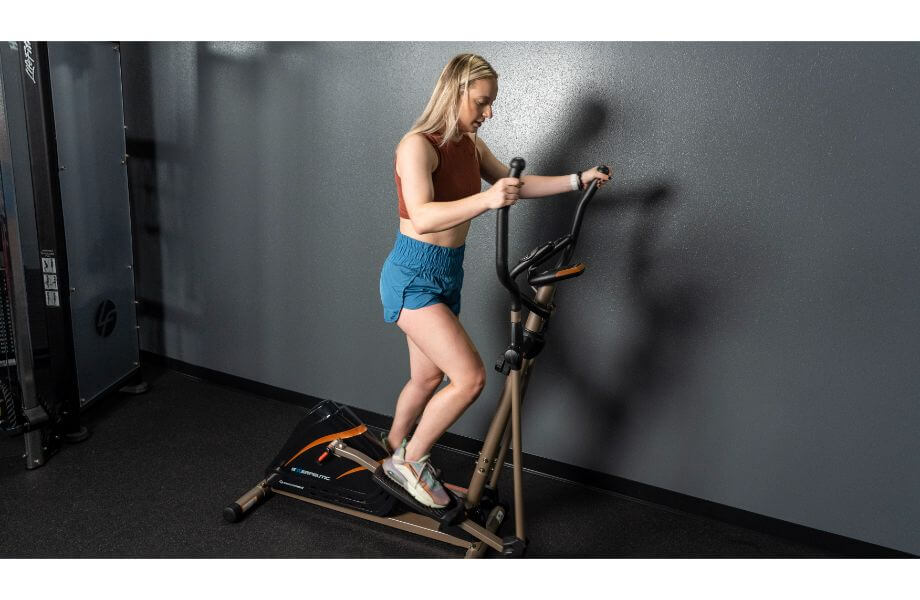We test and review fitness products based on an independent, multi-point methodology. If you use our links to purchase something, we may earn a commission. Read our disclosures.
The elliptical is a popular exercise machine that can give you a serious cardio workout. It activates the upper and lower body for an efficient calorie burn. Many people turn to an elliptical after an injury because its motion is similar to running but without the wear and tear on your body.
Ellipticals can look (and feel) a little intimidating at first. There are handlebars, foot pads/pedals, and resistance levels to manage. But once you get the basic movement down, you can isolate muscle groups in the lower body, work your arms, or do a HIIT workout to challenge yourself and improve your cardiovascular health. These beginner workouts will ease your way into using an elliptical. So get your favorite playlist ready and step onto an elliptical trainer!
Benefits of Elliptical Workouts
Every exercise machine has its pros and cons, even the elliptical. Thankfully, the elliptical’s benefits far outweigh the downsides. For many people, it’s the answer to exercising while healing from a running injury, improving cardiovascular health, and supporting weight loss.
Low Impact
Many people turn to the elliptical when they’re fed up with running on the road or treadmill. Why? The elliptical lets them get a similar workout without beating up their joints. If you’ve got hip, knee, ankle, or foot issues, the elliptical’s low-impact design can be your best friend. However, keep in mind that the movement patterns aren’t identical, especially through the ankle. You might feel fatigued in different areas than when you walk or run.
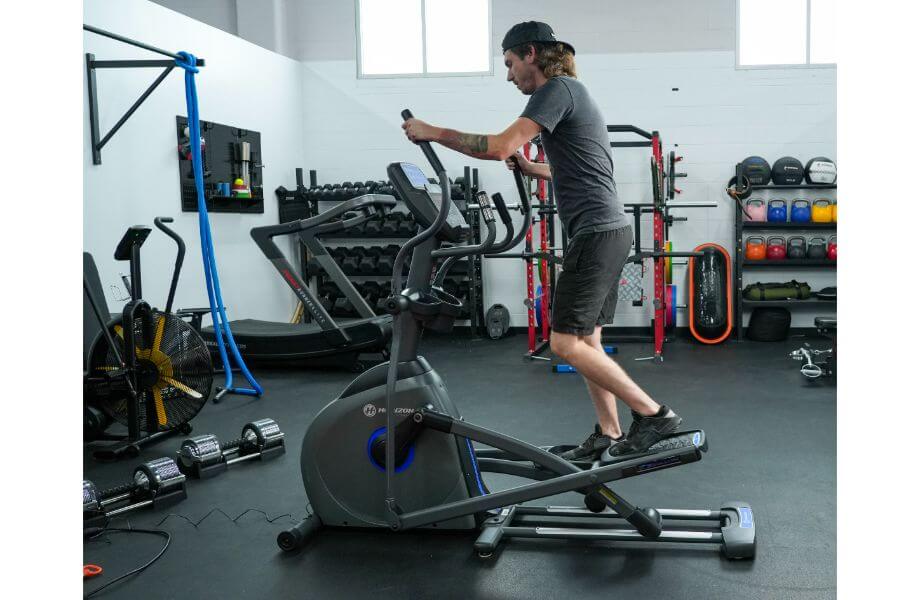
Ellipticals have a suspended pedal system that keeps the feet in contact with the pedal throughout your stride. There’s no real footstrike, which is the high-impact part of running and walking. Consider this as your low-impact workout of choice.
Burns Calories (and Fat)
Activating the upper and lower body at the same time increases your calorie burn in comparison to walking (but not necessarily running). You’ll still burn more calories running during a treadmill workout because the elliptical uses 60 percent less muscle power in comparison. However, you can often make up some ground by increasing the resistance, speed, or both while on the elliptical.
The elliptical activates the upper and lower body, which has the potential to burn more calories than some other cardio workouts, like walking. Harvard Health estimates that you can burn anywhere from 270 to 378 calories in 30 minutes on an elliptical based on your weight.
If you’re burning calories, you’re burning fat, too. Your body’s energy system is fairly complex, so you’ll move in and out of fat-burning versus using other energy sources based on effort and intensity.
Target Different Muscle Groups in the Lower Body
Some ellipticals let you adjust the incline and stride length, which allows you to target specific muscle groups. For example, if you raise the incline, the elliptical acts more like a stair-stepper or climber, working the quads and glutes more than the calves or hamstrings. Lower inclines can activate most of the lower body’s major muscle groups, including the quads, glutes, hamstrings, and calves.
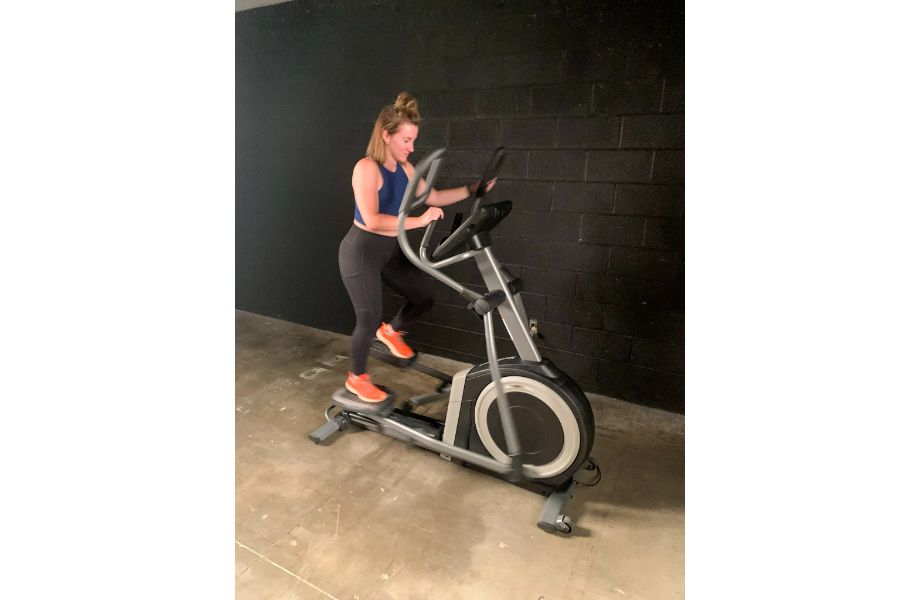
Strengthens Cardiovascular System
An elliptical creates a cardiovascular workout that strengthens the heart and lungs. You’ve probably heard this type of workout called an aerobic or cardio workout. Cardio workouts can also boost your metabolism, helping you burn more calories.
Isolate Upper and Lower Body
Ellipticals can activate the lower and upper body at the same time, or you can isolate them by using only the pedals or only the handlebars. If you take your lower body out of the equation, your upper body has to both push and pull the handlebars. It’s a fairly intense upper-body workout, and you can do the same thing with the lower body.
Easy to Use
Ellipticals are easy to use, but the first time you step on them can be disorienting as the pedals naturally begin to move. There’s a good percentage of people that end up pedaling backward on their first try. There’s nothing wrong with that. Pedaling backward works your glutes and hamstrings, so it’s not a bad idea to include some backward pedaling in your workout.
But, if you’re trying to go forward, it can be frustrating. You can get going by stepping forward with one foot while pushing forward with the opposite hand. Once you’ve got your forward momentum, all you have to do is set a program or adjust the incline and resistance based on your workout goals.
Risks of Elliptical Workouts
While ellipticals can be super beneficial, there are some downsides.
Less Efficient Workout
If you’re in a hurry and you prefer steady-state workouts, the elliptical won’t burn calories as fast as running. Again, an elliptical activates 60 percent less muscle in the lower body compared to running. It might take you longer to burn an equal amount of calories.
Foot Numbness
Keeping your feet in constant contact with the pedals reduces impact. However, it can also put continuous pressure on the nerves, which can cause temporary foot numbness on the bottom of your foot. I’ve experienced this myself. It doesn’t hurt, but it doesn’t feel great either. I’ve worked around it by lifting my foot slightly at the beginning of each stride or repositioning my feet.
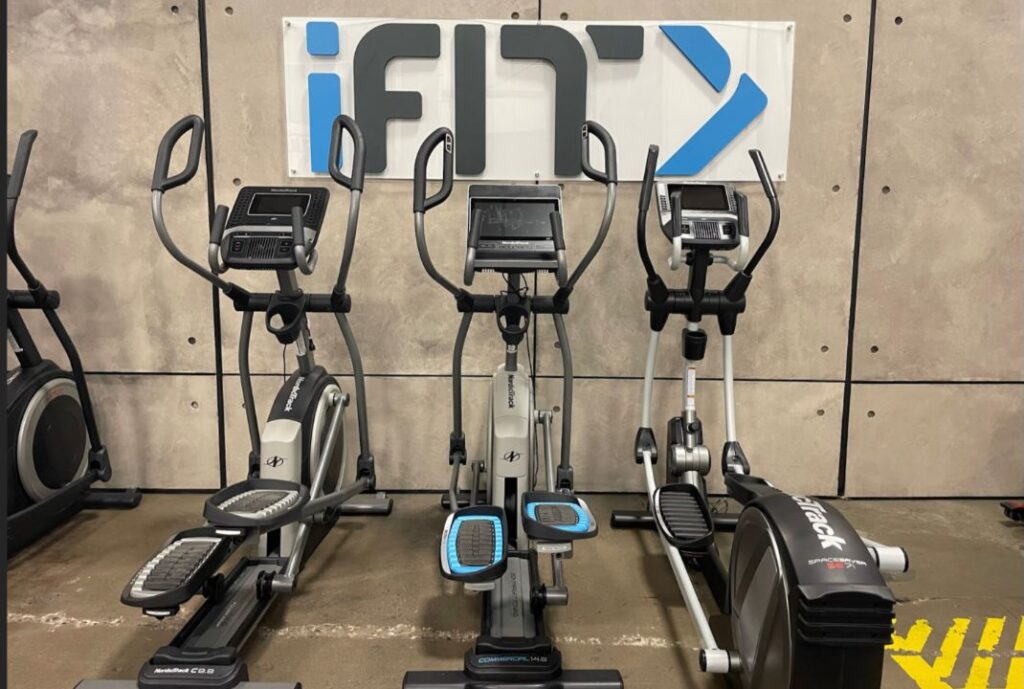
Expensive
If you’re adding an elliptical to your home gym, they’re often pricier than a treadmill. And, you really need to spend more money to get a quality elliptical because they have more moving parts.
Building a Beginner Elliptical Workout
Beginning on an elliptical is like starting any new exercise routine. It’s best to gradually increase the time and intensity to avoid injury and burnout. The CDC recommends 150 minutes of moderate-intensity activity per week to maintain your weight. You can split that up any way you want, but most people aim for 30 minutes five days per week.
If you’re trying to lose weight, you’ll need more than a 30-minute elliptical workout to do it. You’ll have to pay attention to your nutrition, and even potentially up your exercise time and intensity to actively burn through more calories than you’re consuming.
When you’re new to the elliptical, don’t jump into 150 minutes the first week. Use it two or three times per week for 15 to 30 minutes. (If you’re feeling good after 15 minutes, keep going for that full 30).
Different elliptical makes and models will have a variety of resistance levels that can vary from 1 to 10 to 1 to 30 or more. In your first week, keep the resistance low, at somewhere under a five. You should feel challenged but still be able to carry on a conversation.
Keep the incline low the first week, too. Machines that have an incline typically have levels 1 to 20. Stay in the 1 to 8 range to give your joints a chance to adjust to how the elliptical feels. Your body will need to adapt to the range of hip and ankle motion that an elliptical requires.
In your second week, you can try incrementally increasing resistance, incline, or time to increase your perceived effort (how hard it feels to you). However, avoid increasing all three in the same workout. Incremental changes are the safest way to avoid injury.
It’s important to keep these tips in mind, especially if you’re using a personal training app that might come with minimal instructions.
3 Beginner Elliptical Workouts
I’m a certified personal trainer, and it’s your lucky day because I’ve created three beginner elliptical workouts for you to try. These workouts should be done after doing a warm-up, and they should be followed by a cool-down. You can use the elliptical as your warm-up by using it at a resistance level of three or below for five to ten minutes. Keep your effort low (you should be able to sing a song) with the goal of getting the blood flowing before you demand more of your body.
Your cool-down should be about five to ten minutes. The speed, resistance, and intensity should be low to help your body cool down slowly. You’re giving your muscles a chance to slow down gradually rather than all at once to avoid stiffness and soreness.
1. High-Intensity Interval Training (HIIT)
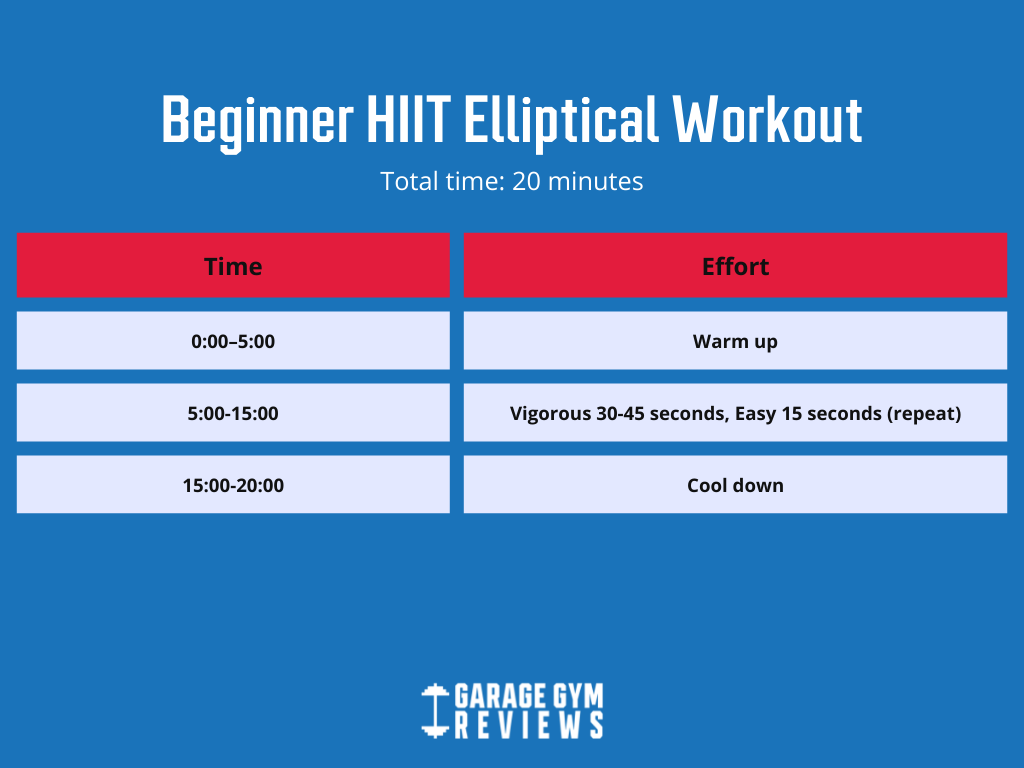
High-intensity interval training (HIIT) is a highly efficient way to work out because you burn a high number of calories in a shorter amount of time.
After warming up, go at just under your maximum effort for 30-45 seconds, depending on your fitness level. Follow this high-intensity interval with a low-intensity 15-second interval. Repeat this pattern for 10 to 20 minutes, but no more than 20 minutes. HIIT is designed for short, intense workouts. Doing it longer doesn’t allow you to put forth as much effort during your high-intensity intervals, which could potentially reduce the effectiveness and calorie burn.
Pro Tip: You can use resistance, incline, speed, or all three to increase the intensity of the high-intensity portion of the intervals. When you first start out, pick one and work with that one variable for a couple of weeks before adding on another.
2. Progressive Intervals
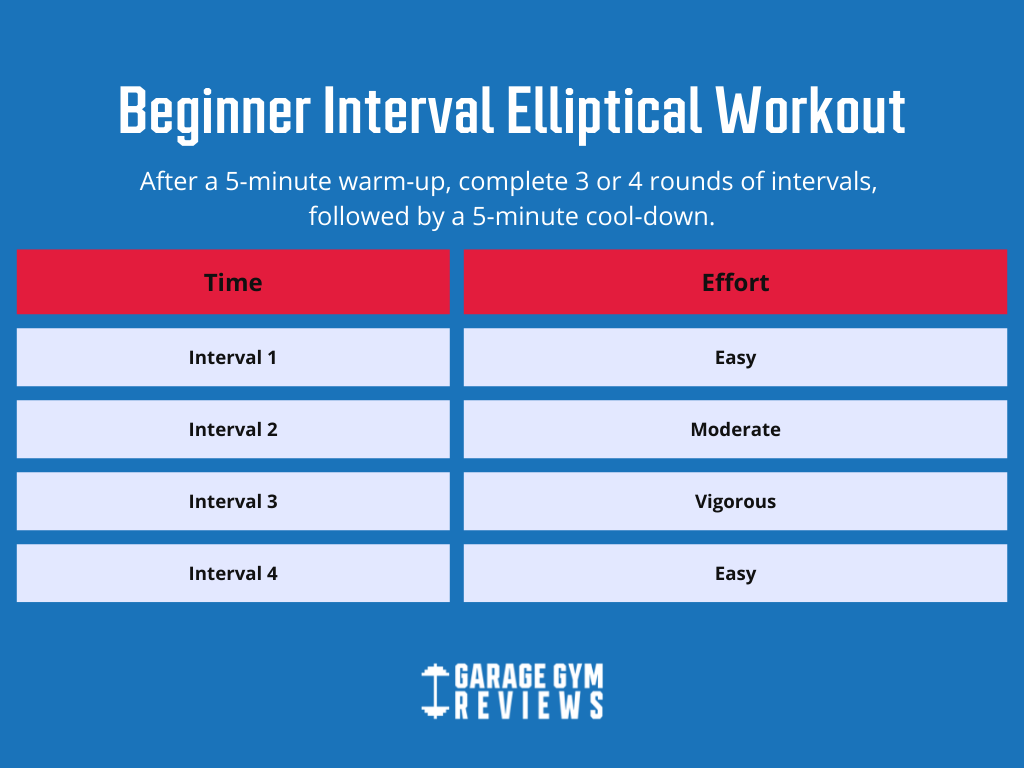
A progressive interval workout works similarly to a HIIT elliptical workout, but the intervals are more varied for those who get bored easily like me. First, decide if you want to use speed, incline, or resistance to challenge yourself.
Here are your one-minute intervals:
- Interval 1: Easy effort (You should be able to easily carry on a conversation.)
- Interval 2: Moderate effort (Your breathing increases, and you can talk, but it should be harder.)
- Interval 3: Vigorous effort (You can talk but in one-word sentences.)
- Rest: You’re still moving the elliptical but with minimal effort. Catch your breath.
Repeat starting at interval 1. Do three or four sets.
Pro Tip: You can add more intervals to each set or add on more sets as your cardio fitness improves.
3. Steady-State
Steady-state means that you use the same continual effort.
Pick an incline, speed, and resistance of moderate intensity, and stick with those settings for your full workout. You might have to start at a lower intensity than you would like until you can keep a steady pace for a full 30 minutes. Depending on your fitness level, aim for five minutes and add an additional minute or two at your next workout until you can go for 30 minutes at a steady state.
Pro Tip: You’ll be tempted to start at a higher intensity than you can maintain for a full 30-minute workout. Use your perceived effort to find what a “moderate” effort feels like for you. Moderate usually means you can talk in short sentences, but you’re breaking a sweat.
Beginner Elliptical Workouts: Final Thoughts
If you’re just getting into fitness or your mobility is limited, an elliptical can get your heart rate up while protecting you from the potential pain and injury of high-impact exercises. It’s a great option for beginners because it’s gentler on your back than a rowing machine and far easier on your lower body than a treadmill.
Here are your key takeaways before you use the elliptical for total-body workouts:
- Gradually increase the difficulty, whether that’s increasing your speed, incline, or resistance.
- Aim for two to three times per week on the elliptical as part of your goal to do 150 minutes of moderate-intensity exercise per week. You can add more days or time after you’ve used the elliptical for a few weeks.
- You can use the elliptical for all of your cardio workouts, but be sure to vary the workout type to keep challenging your muscles to prevent plateauing.
- Gradually work toward 30 minutes of continuous exercise if you’re new to working out.
- Engage your upper body using the handlebars to increase your workout intensity and get a full-body workout.
Best Elliptical Under $1,000
Sole E25
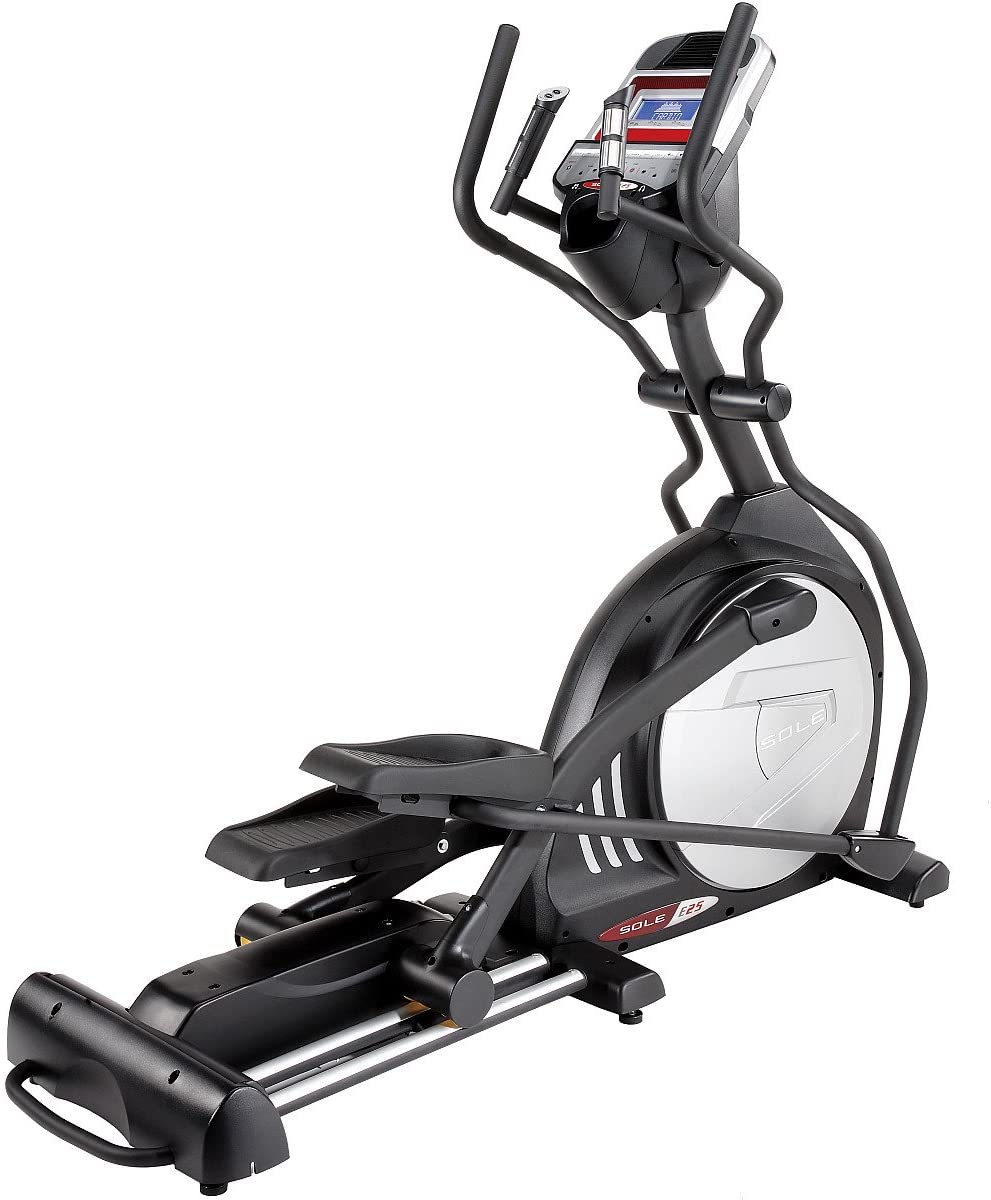
Product Highlights
- Budget friendly and under $1,200
- Lifetime warranty on the frame
- User capacity of up to 350 pounds
- Large footprint at 71” H x 70” L x 24” W
Pros & Cons
Pros
- Under $1,200
- 20 levels of resistance
- 350-pound weight capacity
- Heart rate chest strap included
- High-quality heavy-duty steel frame
Cons
- Difficult assembly with unclear instructions
- Heavy at over 212 pounds
- 20-inch stride length does not adjust
Bottom Line
The SOLE E25 Elliptical provides effective workouts through its use of comfort and natural feel. The quiet front drive system, inward foot pedal design, and heavy duty steel frame all create a smooth, effective workout.
Beginner Elliptical Workouts FAQs
How long should a beginner workout on an elliptical?
Your goal should be to eventually do 30 continuous minutes on the elliptical at a moderate effort. However, beginners may need to start at a lower intensity and gradually increase the time and effort. Doing too much too soon can cause injury or severe soreness that can keep you from exercising at all.
How should a beginner start on the elliptical?
Start by getting on the machine and familiarizing yourself with it. Once you’ve got both feet on the pedals and the handlebars in your hands, step down with one foot using your bodyweight while pressing forward with the opposite hand.
Try out the resistance, and check the preset workout programs already on the machine for any that might work for you. Presets often include intervals and hills that can challenge your body in different ways.
How long should I work out on an elliptical?
A good goal is 30 minutes at moderate intensity as part of reaching 150 minutes of moderate-intensity exercise per week. If you’re using the elliptical for weight loss, consider increase the time you’re on the machine each day and/or increase the intensity. Be patient with yourself, and gradually work your way up to 30 minutes.
Is the elliptical machine good for losing belly fat?
An elliptical helps you burn calories, which means it can help you lose fat. No machine or exercise can specifically target belly fat. As you burn overall fat, which you do by burning calories, belly fat will slowly disappear.
Further reading

Wondering how to sell a used treadmill? We have a number of tips to help you score cash for your machine. Read more

Looking to build explosive strength? Try these plyometric exercises, recommended by a certified personal trainer. Read more

The Rep Fitness Adjustable Bench is one of the best value benches currently available. The Rep Fitness Flat Bench is also a great option at a great price for those looking for a capable bench with a large weight capacity. Read more

The Rogue Westside Power Bar 2.0 is a collaboration between Rogue Fitness and Louie Simmons of Westside Barbell. It's one of the best power bars available and at a price that years ago would be unheard of. Read more

